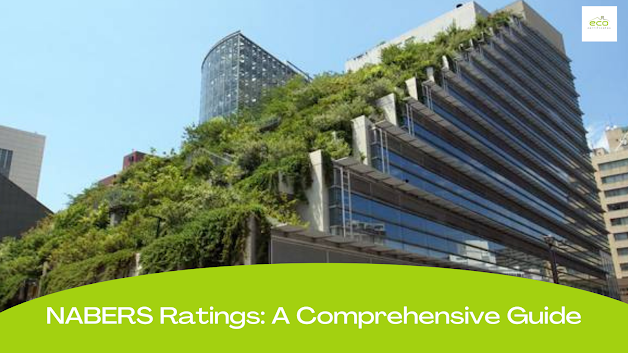NABERS Ratings: A Comprehensive Guide
Over the years, the earth has been facing serious climate change implications. Greenhouse gas emissions, including Carbon Dioxide (CO2), Methane (CH4), and Nitrous Oxide (N2O), are causing a significant temperature rise. To avoid increasing global temperature by 2 degrees, carbon emissions should be reduced by 50%.
The Australian Government has stepped in to combat the increasing carbon footprint generation and drive sustainable building practices. In the endeavor to support the construction of environmental-friendly practices, NABERS, BCA Section J, and BASIX report were introduced.
NABERS Rating
- NABERS is known as the 'National Australian Built Environment Rating System.' It provides reliable and comparable data for sustainability measurements of building sectors like hotels, shopping centers, apartments, offices, and data centers.
- It helps the building owners measure and understand their buildings' environmental performance.
- This system helps in cost savings and financial growth. NABERS rating is a direct indicator of energy efficiency, water usage, waste management, indoor environmental quality of buildings, and their impact on the environment.
Also, Read This:- 6 Tools and Initiatives to Promote Green Building in Australia
How Does NABERS Work?
NABERS measures the environmental quality of the buildings. The ratings will range between 1 and 6.
These ratings will be provided after considering the measures of parameters like
NABERS considers factors like climate conditions under which buildings operate,
Building Types To Which NABERS Applies
NABERS provides separate ratings for different buildings. NABERS applies to office buildings, office tenancy, hotels, shopping centres, and homes. Hotels with AAA ratings and shopping centres over 15000 sqm are eligible for NABERS. It is also applicable to hospitals, schools, and data centres.
While NABERS applies to certain residential building classes, BCA Section J is strictly restricted to commercial buildings.
Why Does NABERS Rating Matter?
NABERS helps the end-users to compare the energy efficiency of buildings. A higher NABERS rating means the building has an excellent environmental achievement.
It helps distinguish the efficiency, value, and ecological impact of one building from the rest. It allows organizations to report their building performance with a reputed certification.
Good to excellent NABERS ratings help the owners to attract high-value occupants and tenants for their properties.
For builders and developers, the NABERS rating help enhance the brand value.
Types of NABERS Rating For Office Building
NABERS Rating for offices can be divided into three categories:
NABERS base building ratings generally cover the central services and common areas.
NABERS tenancy ratings measure rental space energy usage, including tenant power, tenant lighting, etc.
NABERS' whole building ratings include both base building and tenancy portions. They cover the entire building.
These ratings will generally reflect any retrofitting for commercial and environmental sustainability.
What Does NABERS Star Rating Indicate?
NABERS rating range between 0 and 6 stars. Each rating indicates a different level of performance.
6-star rating indicates that the building is top class and is leading in the industry.
5-star rating indicates excellent performance.
4-star rating indicates that the performance is good but has scope for better outcomes.
3-star rating indicates average performance and a huge scope for improvement.
2-star rating indicates below-average performance.
1-star rating indicates poor performance.
Finally, a 0-star rating indicates very poor performance.
NABERS Calculation For Office Buildings
The NABERS calculation for office buildings is carried out in a pattern.
Total energy used for 12 months is calculated using utility bill data and meter readings.
The total energy is multiplied with NABERS constant greenhouse gas factor. This factor will remain consistent throughout the year.
Energy used is then adjusted to the area, climate, hours of occupancy, etc.
The figure computed after making all the above corrections is known as the benchmark figure and will be used to compare with other buildings.
The benchmark factor is then compared with the star rating benchmark to determine star rating.
Finally, the NABERS star rating will be provided based on the performance of the building.
NABERS and BEEC
BEEC stands for Building Energy Efficiency Certificate. NABERS and BEEC together help the owners and tenants with financial growth and sustainability. NABERS is an integral part of the BEEC certification that is mandatory for those who want to advertise for sublease, lease, or sale of any commercial area above 1000 sqm.
Conclusion
NABERS ratings empower sustainable construction by offering easy, measurable ratings for sustainability. NABERS-rated buildings will always have higher market value, minimal operational experiences, and attract high-value clients. Get your building NABERS rated by qualified building consultants today to enjoy the benefits.




Comments
Post a Comment